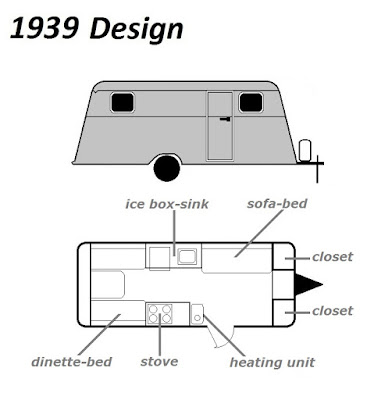The social upheaval of The Great Depression caused a marked shift in the American perception of a trailer coach. In the years before 1930, a mobile abode was seen as a symbol of leisure, prosperity and adventure.
As the economy worsened, thousands lost their jobs and began roaming the country, trailer coach in tow, seeking whatever work was available.
A Tin Lizzie and trailer head down US Highway 101, near King City, California. The date, February 1936.
Photo from Library of Congress / Dorothea Lange
These rigs, originally designed for sporadic use, were having to provide accommodations year-round. Many took on a shoddy and worn-out appearance.
Meanwhile, the first trailer parks, or "auto camps," had been established in bucolic surroundings, often near lakes or National Parks. A host of amenities were often provided.
By the mid-1930s, such facilities were being hastily created on the outskirts of cities, where migrant residents were crowded together, in squalid conditions, with little or no services to speak of. Often derided as "Hoovervilles," these settlements incited the ire of local governments. Trailer coach dwellers, once viewed as tourists, were now labeled as hobos or vagabonds.
An image taken at a California auto camp trailer park, dated November 1936.
Photo from Library of Congress / Dorothea Lange





No comments:
Post a Comment